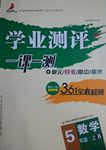题目内容
D
Taste is suc.h a subjective matter that we dori't usually conduct preference tests for food. The most you can say about anyone's preference is that it's one person's opinion.But because the two bigcola companies-Coca-Cola and Pepsi Cola-are marketed so aggressively, we've wondered how big arole taste-preference actually plays in brand loyalty.We set up a taste test that challenged people who identified themselves as either Coca-cola or Pepsi fans: Find your brand in a blind tasting.
we inwited staff wolunteers who had a strong liking for either Coca-Cola Classic or Pepsi, Diet Coke.or Diet Pepsi.These were people who thought they'd have no trouble telling their brand from the oLher brancl.
We eventuallv located 19 regular cola drinkers and 27 diet cola drinkers.Then we fed them with four unidentified samples of cola one at a time, regular colas for the one group, diet versions for the other.rOVe asked them to tell us whether each sample wa.s Coke or Pepsi; then we analyzed the records statistically to compare the participants' choices \~-ith what mere guesswork could have accom-plished.
Getting all four samples right was a tough test, biit not too tough, we thought, for people whobelieved they could recognize their brand. In the end, only 7 0ut of 19 regular cola drinkers correct-ly identified their brand of choice in all four trial.s. The diet-cola drinkers did a little worse-only 7 out of 27 identified all four samples correctly.
Both groups did better than chance would predict, but nearly half the participants in each group made the wrong choice two or more times.Two people got all'four samples vrrong. Overall, hal.f theparticipants did about as well on the last round of tasting as on the first, so tiredness, or taste burn-out, was not a factor. Our preference test results suggest that only a few Pepsi participants and Coke fans may really be able to tell their favorite brand by taste and price.
71.According to the passage the preference test was conducted in order to______
A.show that a person's opinion about taste is mere guesswork
B.compare the ability of the participants in choosing their drinks
C.find out the role taste preference plays in a person's drinking
D.reveal which cola is more to the liking of the dr-inkcrs
72.The statistics recorded in the preference tests show that
A.there is not much difference in taste between Coca-Cola and Pepsi
B.few people had trouble telling Coca-Cola from Pepsi
C.people's tastes differ from one another
D.Coca-Cola and Pepsi are people's two most favorite drinks
73.It is implied in the first paragraph that______
A.the competition between the two colas is very strong
B.blind tasting is necessary for identifying fans
C.the purpose of taste test is to promote the sale of colas
D.the improvement of quality is the chief concern of the two cola companies
74.The underlined word "bumout" here refers to the state of .
A.being seriously bumt in the skin
B.being badly damaged by fire
C.being unable to bum for lack of fuel
D.being unable to function because of too much use
75.The author's purpose in writing this passage is to .
A.emphasize that taste and price are closely related to each other
B.recommend that blind tasting be introduced in the quality control'of colas
C.show that taste preference is highly subjective
D.argue that taste testing is an important marketing strategy
71—75 CAADC

 学业测评一课一测系列答案
学业测评一课一测系列答案